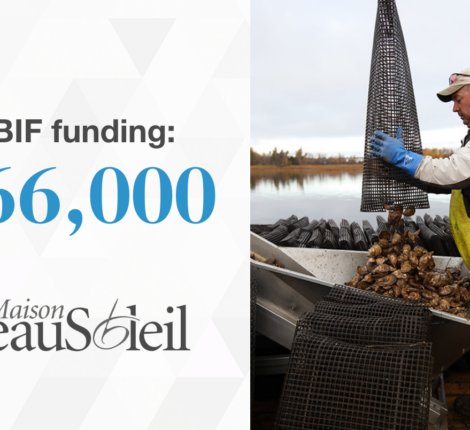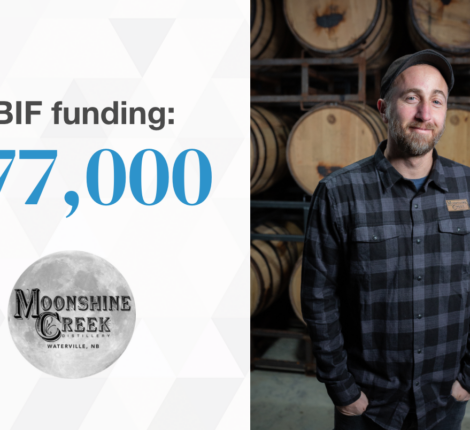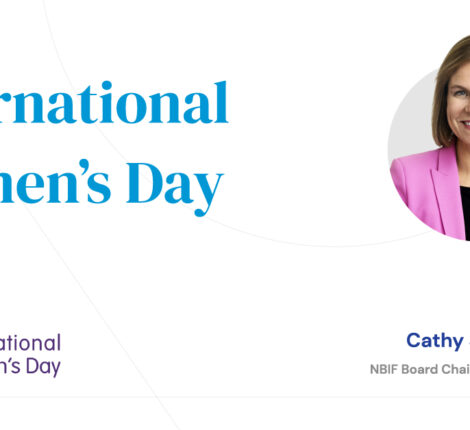- September 3, 2020
- Innovation Insights
- Comments : 0
Applied Research Spotlight: Q&A with Mount Allison’s Dr. Justin Liefer

Hilary Lenihan
Research Development Officer
What if we could turn pollution in water into energy?
With support from our Equipment Fund, that’s what Dr. Liefer, an assistant professor in Biology at Mount Allison University, is exploring. He is researching how phytoplankton can be used to absorb pollution in wastewater and then turned into biofuel.
Cool, right?
We reached out to Dr. Liefer to ask a few questions about his work.
- What can you tell us about this innovative research project?
I am exploring how water treatment biotechnology can be improved using phytoplankton – those are the photosynthetic microbes that support most aquatic life. Phytoplankton can potentially create cost-effective wastewater treatment systems by efficiently absorbing pollutants and converting them to value-added products like biofuels.
There are thousands of different types of phytoplankton. With the help of NBIF, my lab will explore how phytoplankton can use major pollutants as nutrients and which types of phytoplankton work best as a biotech tool for wastewater management. - How did you get started on this research?
This project grew from other recent work I’ve done, along with my colleagues, to understand how ocean phytoplankton control the global flow of carbon, nitrogen, and phosphorus. These are the essential elements that make up all life.
Phytoplankton serve similar roles in the ocean as plants do on land: absorbing carbon and affecting Earth’s climate, making much of the oxygen that we breathe, and using nutrients like nitrogen and phosphorus to fuel their growth. I am studying how these same roles can be applied in wastewater treatment plants, where phytoplankton could get the nitrogen and phosphorus, they need from wastewater pollutants and feed sustainable biofuel systems rather than ocean life. - Who will benefit from this research?
Human life is dependent on clean, safe drinking water. The cost of updating Canada’s water treatment infrastructure to meet national goals for safe drinking and recreational waters is estimated to be great than $100 billion. Nutrient pollution caused by the failure to improve this infrastructure and adequately treat wastewater contributes to a rise in harmful algae blooms. These blooms threaten water-based industries such as fisheries and are expected to be the greatest threat to drinking water safety in Canada and worldwide in the near future.
The ultimate goal of this research is to help wastewater managers make the wastewater that enters our lakes and shores cleaner and to do so at a lower cost. That will give the general public more sustainable and affordable water resources. - What will this research mean for New Brunswickers?
Much of the high cost of improving Canada’s water treatment will be paid by municipalities that own and operate the vast majority of these systems. The technologies that can be developed from this research will reduce costs for New Brunswick communities, where clean natural waters are vital to our culture and economy. Additionally, I plan to collaborate directly with biotechnology companies and wastewater managers in New Brunswick, particularly those interested in creating and using new water treatment systems. - How is the equipment funding from NBIF helping your research?
The equipment funding provided by NBIF has allowed me to obtain state-of-the-art research tools that are critical to this project. These tools will allow my research team to directly measure the nutrient pollutants that phytoplankton can absorb and understand the processes within phytoplankton that make this possible.
Turning polluted water into energy is the game-changing research we look to support. It’s not only possible, but it’s being pioneered right here in New Brunswick, thanks to Dr. Liefer and his colleagues at Mount Allison. Our equipment fund allows Dr. Liefer and his team to purchase critical equipment to support their research. We invest in researchers whose projects have a high potential for commercialization and economic impact in New Brunswick. By providing these funds to Dr. Liefer, we’re supporting the increase in our provinces’ applied research capacity.



